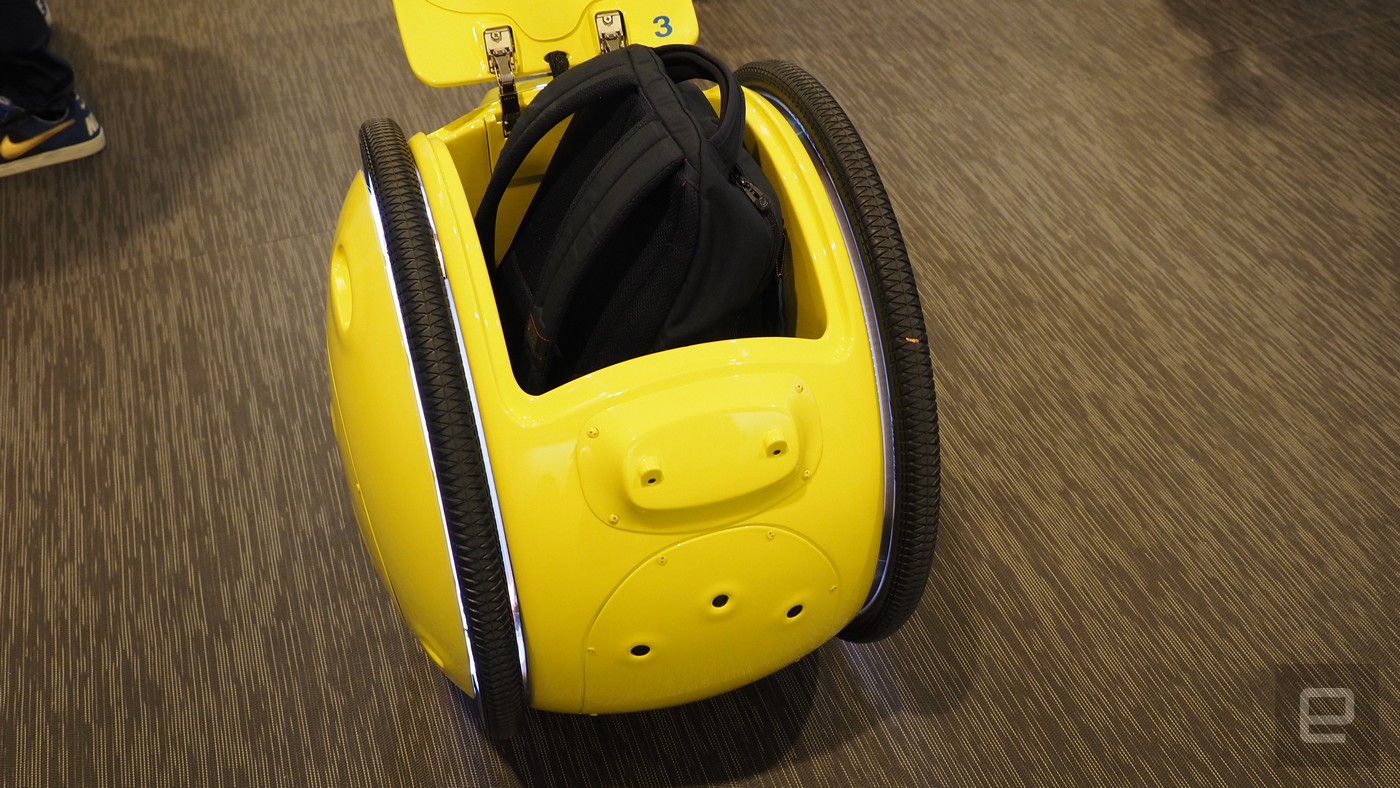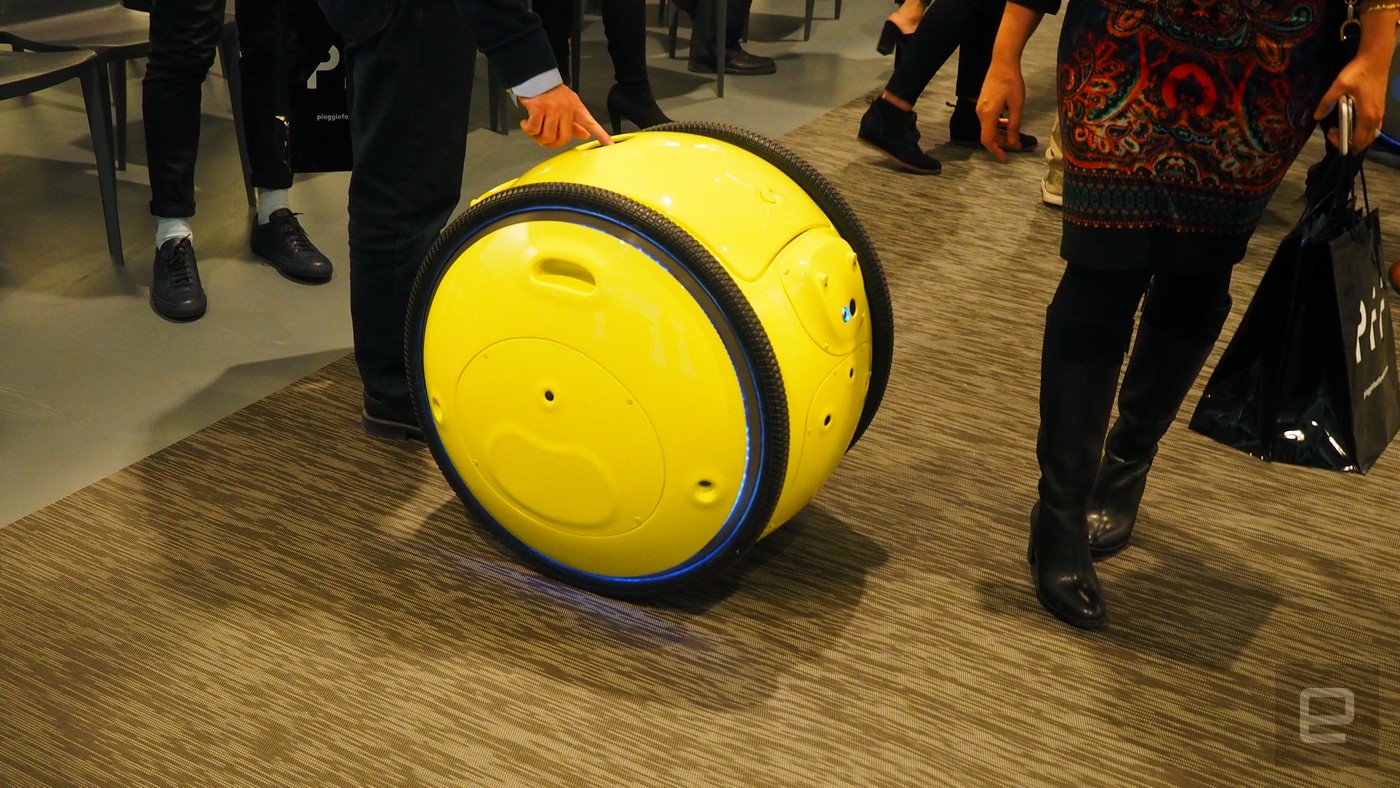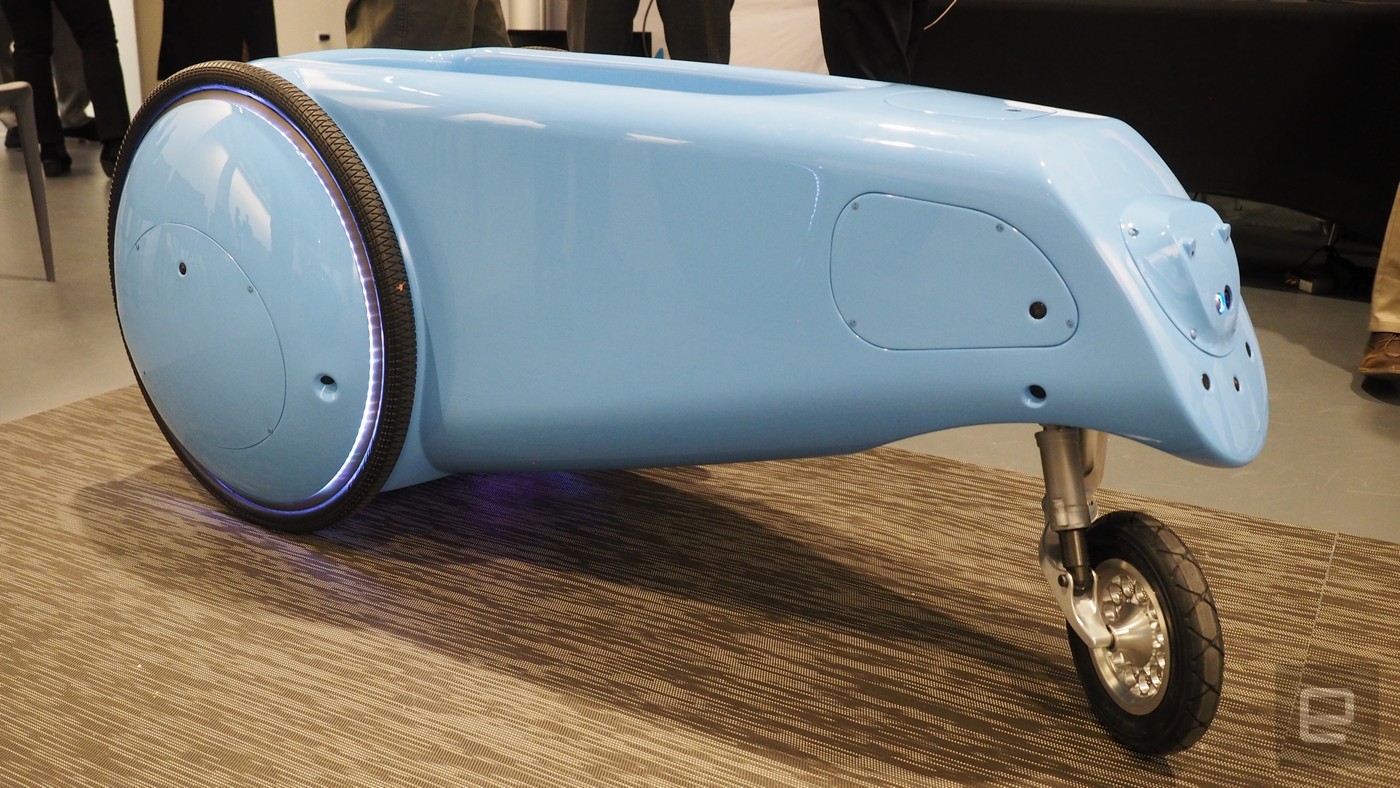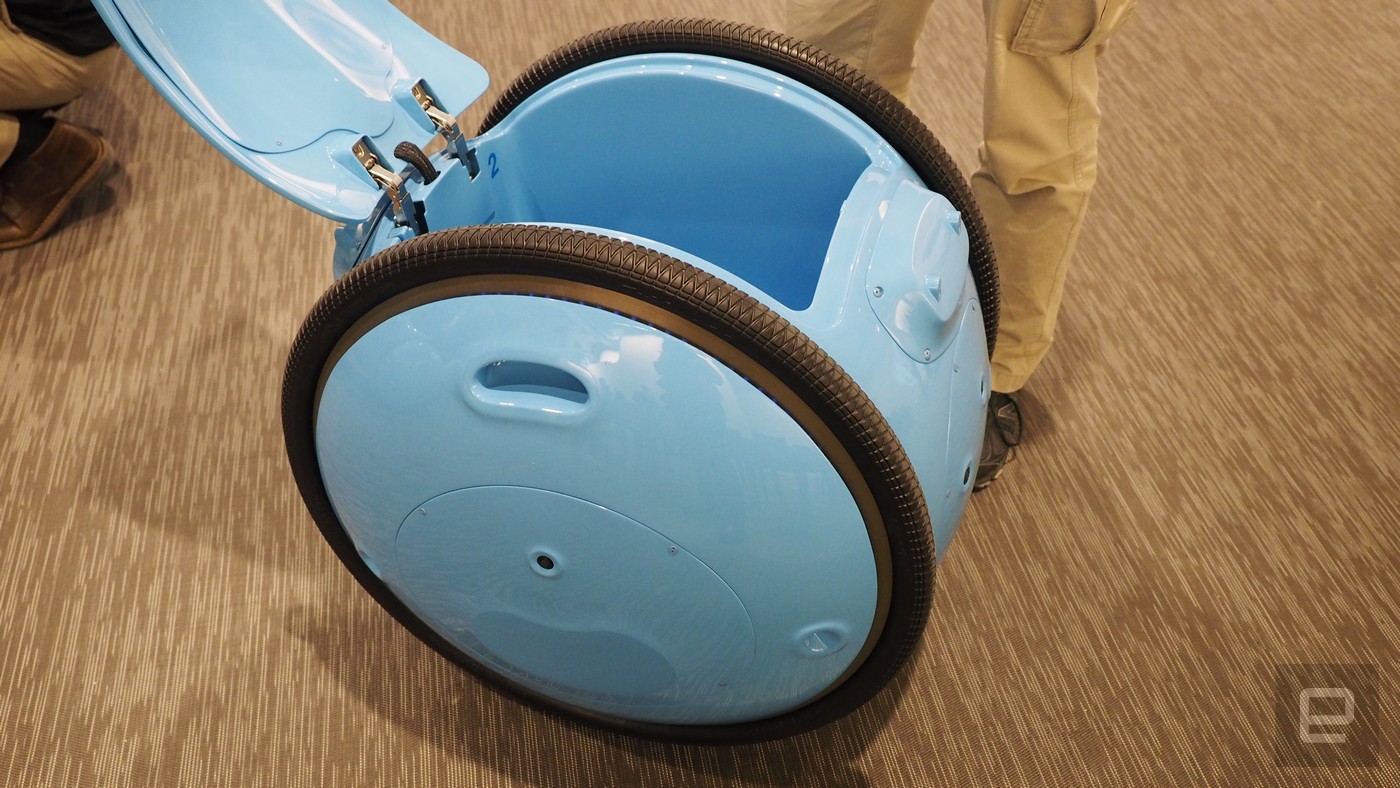The Gita is your rolling robot porter
Though robots are increasingly making their way into factories, offices and even airports, they’re still not something you’d encounter walking down a city street — and definitely not in a way that’s personally useful to you. We’d all love to have our own personal BB-8 droid to follow us around and help get things done, but so far we’ve had to settle for robotic vacuums and airport greeters. Piaggio Fast Forward promises to bring us a bit closer to that science-fiction reality with its smart cargo vehicle, the Gita. It’s relatively small, attractive and can follow you everywhere, ready to lend a hand when you’ve taken on too much to carry.
The Gita (pronounced “jee-ta”) is the first project from Fast Forward, a new offshoot from the larger Piaggio Group. Unless you’re a big scooter enthusiast, you might not immediately recognize that name. However, you’re most certainly familiar with the company’s most famous product, the Vespa. First sold in 1946 and popularized in films like Roman Holiday, Vespas have a reputation for being cute, sleek and stylish.

Piaggio’s decades of design expertise are immediately apparent in the carbon body of each Gita unit. It’s 22 inches tall, with the smooth, shiny surface broken only by the large rubber treads and the assortment of cameras that help the Gita navigate. There’s a small compartment accessed via the hatch on top, which can carry up to 40 pounds. At a demonstration I attended this week, I easily stowed my work backpack and its contents inside one of the units. All told, the length of the storage unit was enough to lay my 14-inch notebook down with room to spare around the edges, and I could have easily stacked more laptops and books on top of it, plus my DSLR.

For larger loads, Piaggio’s been working on a larger sibling called the Kilo. It’s more than twice as long with an open bay and can handle up to 200 pounds. The Kilo is intended for delivery people, who can fill up the container with packages and have it follow them on their routes.
How exactly do the Gita and Kilo know where to go? They don’t use GPS — which is fine because the device is intended to work indoors as well as outdoors. Right now, there are two modes of basic operation. The Gita can follow a person wearing a special belt, which connects to the robot via WiFi. The belts are currently rough, bulky prototypes, with a cooling unit clearly visible inside the 3D-printed housing. The belt has cameras built in, which helps the Gita determine where exactly you’re going.

The Gita maintains a good distance while you’re walking or running, but will sidle up close once it’s determined you’ve stopped moving around. It’s not perfect just yet; during my demo the Gita seemed a little confused as to which direction it should face. But this is still an early version, with four to six months of testing ahead of it.
The other mode is Gita’s autonomous mode, in which it will map out an area and journey to and fro on its own. This can be useful for letting it run errands — one of the current ideas is to have Gita do deliveries, only unlocking its compartments once it’s reached the intended recipient. Gitas can also work together in a convoy, communicating with each other about their surroundings and traveling in a straight line like ducklings following their mother.

If the Gita doesn’t do much now, it’s understandable given the whirlwind nature of its development. I spoke to several employees of Piaggio Fast Forward, including hardware engineers and designers, and most of them had been working there only four months or less. There’s no price or availability to speak of because the project still has a lot of testing ahead of it. The plan is to take the Gita to places like corporate campuses, hospitals and stores and see what use cases arise from those situations. Chairman of the Board Michele Colaninno mentioned even asking his children what they’d like to see the Gita do — and after a half hour, they came back with a list of 40 options.
The sidewalk-bound Gita may seem a little unusual for a company that specializes in road vehicles. But Piaggio sees it as yet another way to increase people’s personal freedom and mobility — something its scooters do well in cities where automobile traffic and parking are big problems. Ideally, Piaggio would like a future where people don’t need cars and walk a lot more. And you might be willing to do just that if you have a lot less to carry.
(78)





